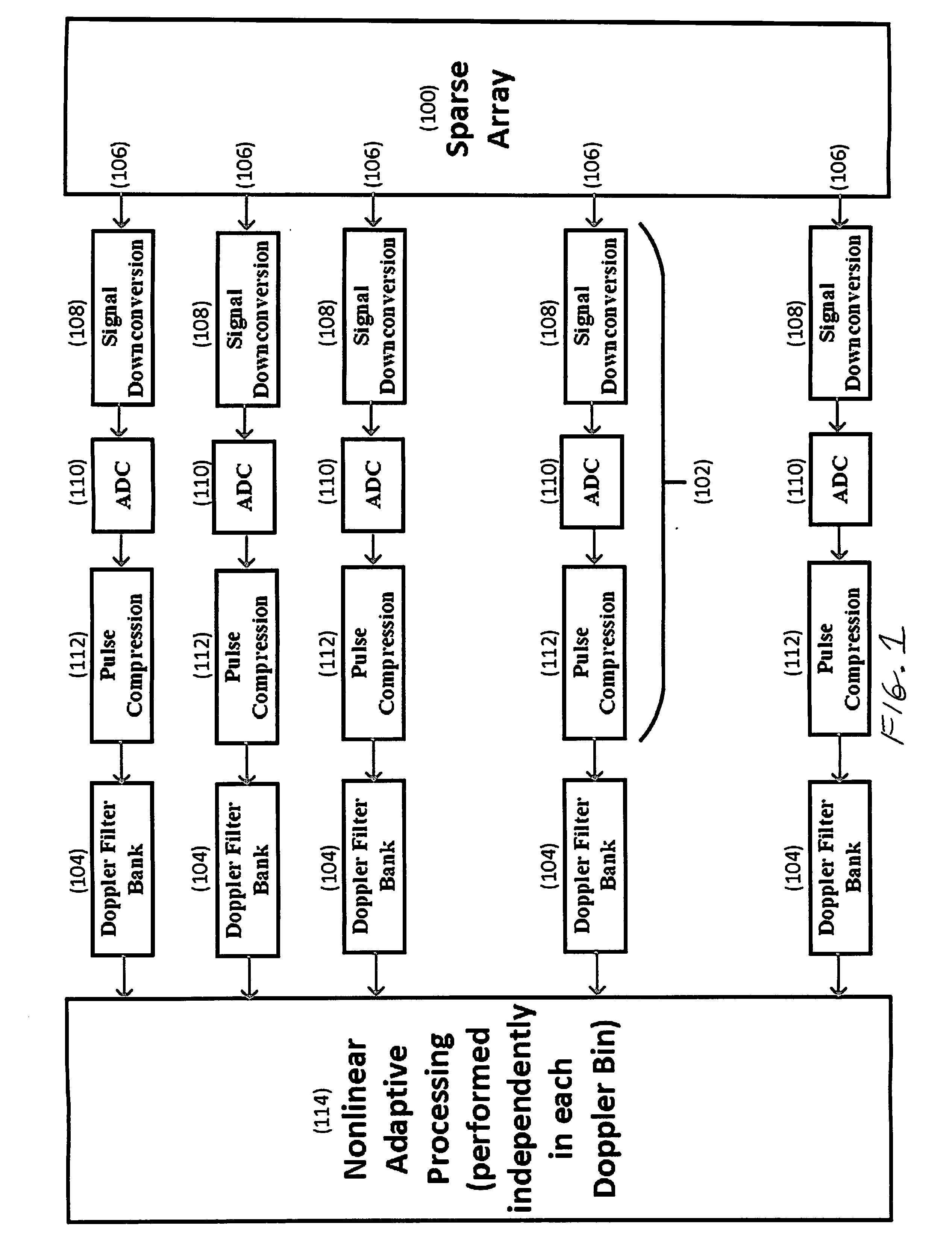Sparse Space-Time Adaptive Array Architecture
a space-time adaptive array and array architecture technology, applied in communication jamming, instruments, measurement devices, etc., can solve the problems of loss of doppler information in the received signal, and achieve the effect of reducing the impact of unintentional interference and hostile jamming on the received signal
- Summary
- Abstract
- Description
- Claims
- Application Information
AI Technical Summary
Benefits of technology
Problems solved by technology
Method used
Image
Examples
Embodiment Construction
[0011]The invention is illustrated in FIG. 1. It consists of a multichannel sparse array 100 with a receiver 102 and a Doppler filter bank 104 behind each array element 106. Every receiver 102 performs signal downconversion to baseband with downconverter 108, then analog-to-digital conversion with ADC 110, and pulse compression with pulse compressor 112. Each Doppler filter bank 104 transforms the uniformly sampled radar pulses from a single range bin to the Doppler domain. The signal processor 114 then performs nonlinear spatially adaptive processing within each Doppler frequency bin.
[0012]To describe the operation of this array architecture consider the discrete-time voltage output vector xn(m,θ) of a sparse (e.g.. nested or coprime) array in the absence of noise.
xn(m,θ)=sn[m]v(0) (8)
where rn denotes pulse number. n corresponds to the range bin. sn(m) represents complex baseband samples of the signal. and v(0) is the steering vector in the direction 0 of a single target. For a f...
PUM
 Login to View More
Login to View More Abstract
Description
Claims
Application Information
 Login to View More
Login to View More - R&D
- Intellectual Property
- Life Sciences
- Materials
- Tech Scout
- Unparalleled Data Quality
- Higher Quality Content
- 60% Fewer Hallucinations
Browse by: Latest US Patents, China's latest patents, Technical Efficacy Thesaurus, Application Domain, Technology Topic, Popular Technical Reports.
© 2025 PatSnap. All rights reserved.Legal|Privacy policy|Modern Slavery Act Transparency Statement|Sitemap|About US| Contact US: help@patsnap.com



